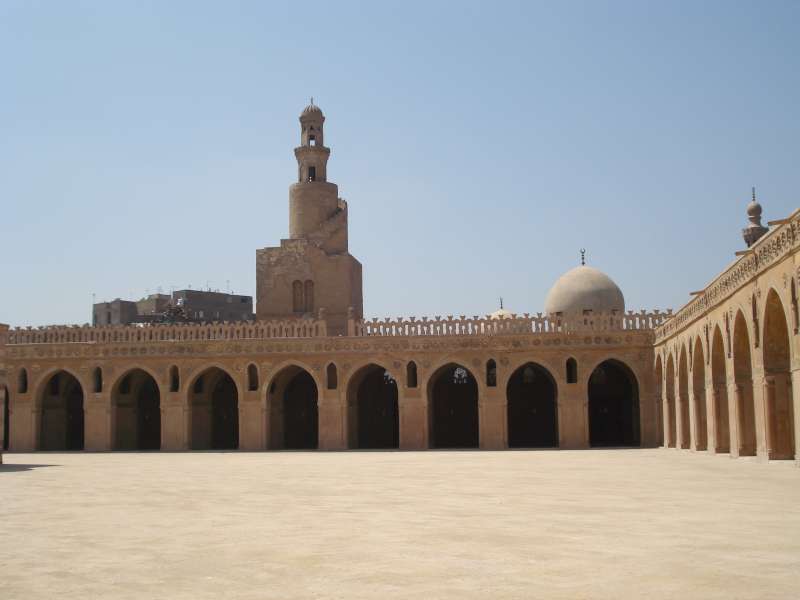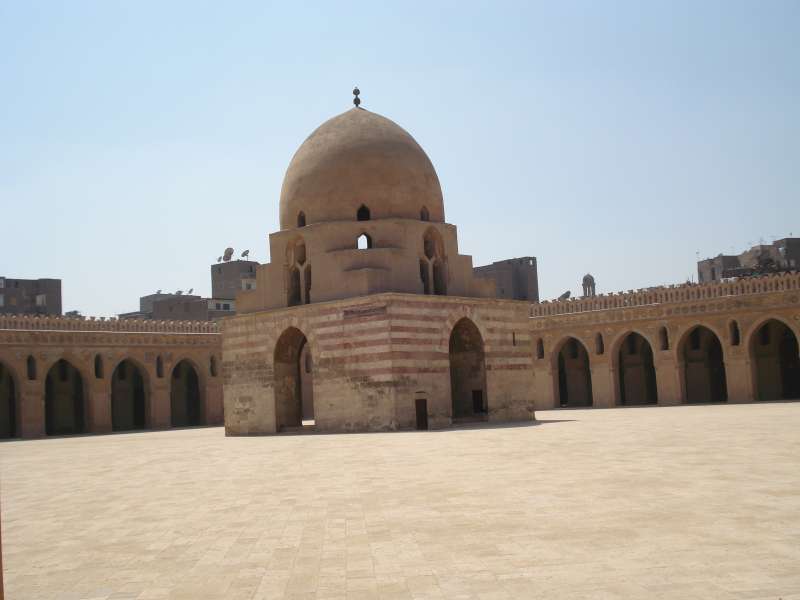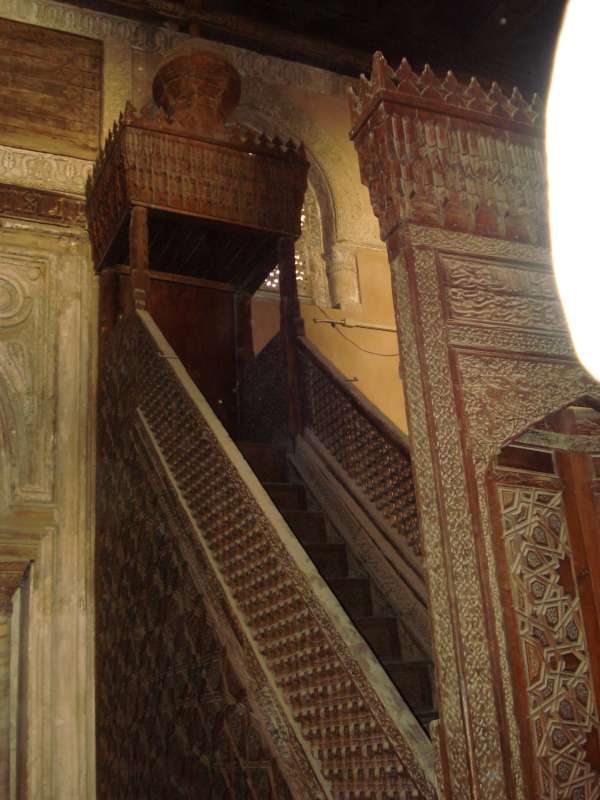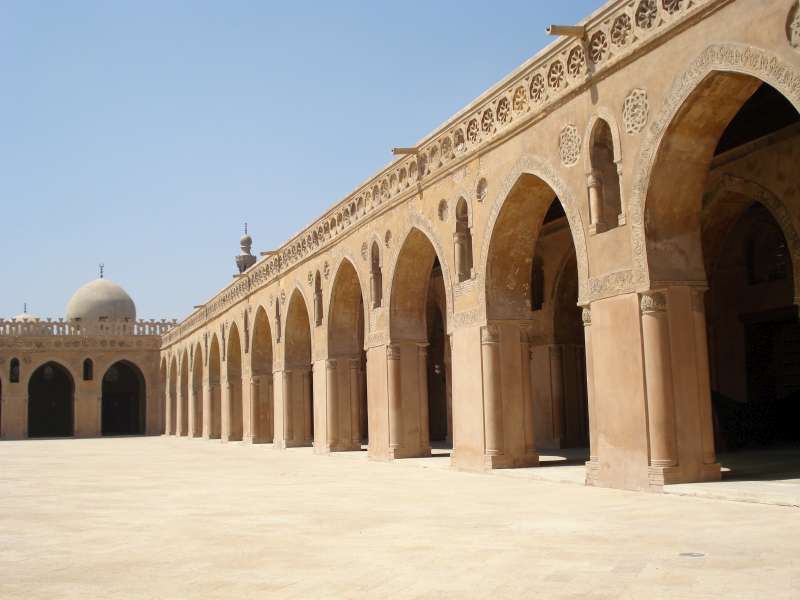
World Monument Photography
July 27, 2024
Mosque Ahmad ibn Tulun is the oldest and largest mosque in Cairo to survive in its original form. Its total area measures 6.5 acres. The mosque was commissioned by Ahmad ibn Tulun during the Abbasid area of the Islamic Empire in 876 AD and was completed in 879 AD. It was built large enough to house ibn Tulun’s entire army. The mosque was constructed on a small hill called Gebel Yashkur, or “Hill of Thanksgiving.” One legend claims that this was the hill that Noah’s Ark came to rest.
Ahmad ibn Tulun was born in Baghdad in Ramadan 220 AH (September 835 AD). His father was a Turkic slave that was sent as tribute by the governor of Bukhara to the Abassid Caliph Al-Ma’mun. Turkish slaves were recruited by the Caliph to serve in the army. Tulun rose through the ranks until he became the Caliph’s private guard.

Later on, the family moved to Samarra in 850, and ibn Tulun received his military and religious training there. He was appointed commander of special forces for Caliph al-Mutawakkil in 855. In 868, Caliph al-Mu’tazz appointed Bayik Bey, ibn Tulun’s step father, as the governor of Egypt, and Bayik Bey, in turn, sent Ahmad ibn Tulun as his regent.
Upon arrival to al-Fustat, the capital of Egypt at the time, he found the city too small to accommodate his armies; therefore, he founded a new capital, Medinate al-Qatta’i. Its layout was modeled after the grand cities in Persia and the Byzantine Empire. A large mosque was built to be able to accommodate his vast army.
Ibn Tulun faced several obstacles upon being regent governor in Egypt. First, the head of the council of financial affairs completely bypassed ibn Tulun and reported directly to the Caliph, thus diminishing ibn Tulun’s power and influence. Eventually, after four years ibn Tulun was able to convince the Caliph to remove him from power. Next, in 870, he led an army against the rebellious governor of Syria, which allowed him to increase the size of his army to 100,000.

In 871, Caliph al-Mu’tamid decided to appoint his son governor of Egypt, but a rebellion in Basra by the Zanj ( a group of black slaves ) delayed the execution of his appointment. In 874, ibn Tulun took advantage of chaos in Iraq to declare himself independent of the Abassid Empire. In 877, the Caliph sent an army to retake Egypt, but ibn Tulun was able to soundly defeat this army and was able to take large portions of Syria. However, his campaign was cut short when he had to return to Egypt to quell a revolt led by his son, Abbas.
In 882, ibn Tulun invited the powerless Caliph to Egypt to offer him protection against his brother, Muwaffak, who declared himself Caliph. However, the caliph was intercepted on his way to Egypt.

This initiated a war of words, as ibn Tulun and Muwaffak cursed each other during Friday prayers, and war of swords as the fought each other in Tarsus (present day southeastern Turkey on Mediterranean Sea) in 883. After what seemed to be a successful siege, ibn Tulun fell ill and returned to Egypt and died on May 10, 884. His 20 year old son lacked the wisdom and charisma that his father possessed and the Abassids re-occupied Egypt in 905 AD. Ibn Tulun’s capital city of Medinat al-Qatta’i was razed to the ground with the mosque being the only surviving structure. This signaled the end of the short-lived Tulunid dynasty.

The mosque itself was built in the Samarra architecture. This is especially evident in the minaret which features an outdoor staircase. The top of the minaret was rebuilt during the Mamluk era with distinct Mamluk style of domes. The mosque’s pointed arches were built 200 years before they appeared in cathedrals throughout Europe.